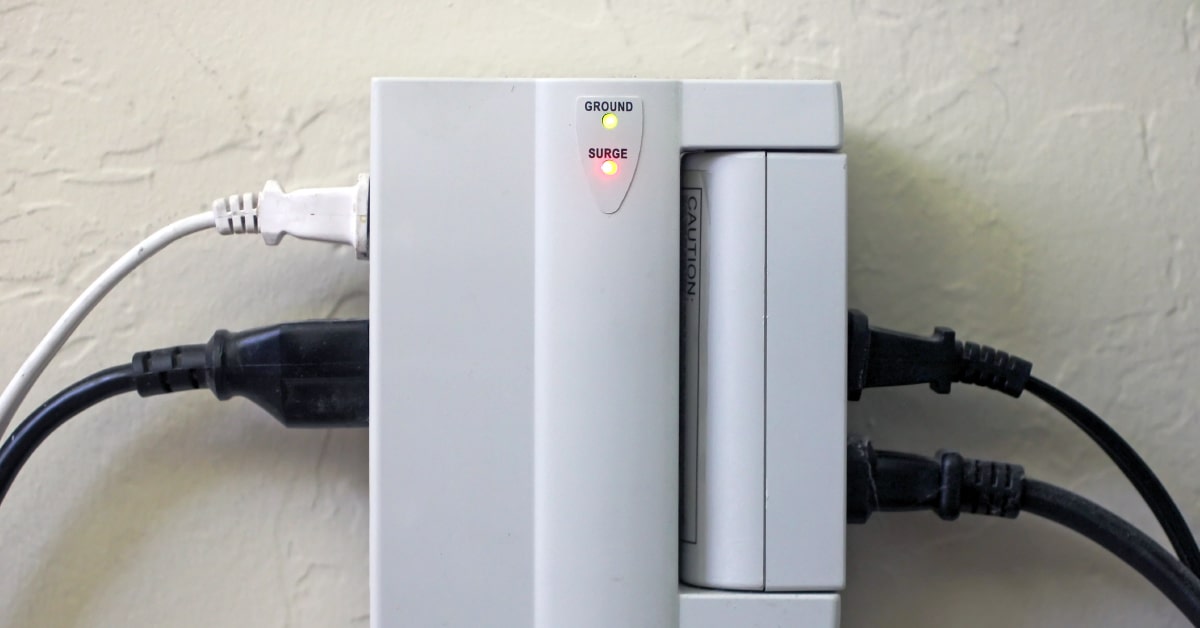How to Protect Your Home from a Power Surge - NEC Coop
Mar 14, 2023 — Electrical Safety, Resources

Our lifestyle revolves around the use of electronic devices and appliances like our mobile phones, refrigerators, and computers, so when a power surge occurs, protecting your electrical devices are essential.
Contrary to what many people think, power surges are not just about dramatic lighting strikes wrecking your television – they are more common than you may think. Hence, power surge protection is a sound investment in your own safety, as well as your appliances and electronics.
Let’s go over what happens in the event of a power surge and what steps you can take to protect your home from it.
What is a power surge?
A typical wall outlet has 120-volt AC or alternating current power flowing through it. However, the voltage can fluctuate between 0-169 volts.
During a damaging power surge, the electrical current surpasses 169 volts.
How do power surges cause damage?
A surge in voltage caused by a power surge results in an arc of current between devices. This arc of electrical current creates heat, and this can cause damage to the circuit boards and other parts of the device.
Major power surges can cause instant and permanent damage. Smaller surges can cause damage in small increments that accumulate as time goes on. They may not cause damage to an appliance in an instant but can affect the functional life of your appliances or devices.
Signs of a power surge
There are some signs that suggest that your device has experienced a power surge, including:
- The device does not work or is off
- The lights of the device are flashing
- The power strip or surge protector may require resetting
- There is a burnt or acrid smell around the device or its power source
Preventing power surges from causing damage
Buying a good quality surge protector, also known as a surge diverter or suppressor, can help shield your home from damage caused by power surges.
Instead of entering your device’s sensitive circuits, a good surge protector averts voltage spikes safely to the ground.
Choosing a surge protector
Your choice of a surge protector will largely depend on how you’re going to use it, as well as your budget.
Power strips with surge protection are by far the most affordable kind available today. They are rated in joules, hence, it’s essential to pick a model with the right rating for the devices you plan to protect.
Whole house surge suppressors are directly connected to your fuse box and help block power surges from your home, right at the source.
Transient voltage surge suppressors are linked or wired directly into the outlet boxes of your home. They can provide great protection for anything you plug into them.
Power surges can inflict a lot of damage on your electronic devices. Making sure that surge protectors are in place can protect your home from long-term wear and short-term damage. Investing in power surge protection and a surge protection system can keep your electronic devices running safely and save you money in the long run – bringing you more peace of mind.
Sources:
“What is a Surge Protector & How it Helps With Power Surges?” D&F Liquidators, https://www.dfliq.net/blog/what-is-a-surge-protector/
“Can a power surge damage my electronics?” Simple Insights, https://www.statefarm.com/simple-insights/residence/are-power-surges-damaging-your-electronics
“The Best Surge Protector,” NY Times, https://www.nytimes.com/wirecutter/reviews/best-surge-protector/
“Surge Protectors vs. Power Strips: Which Option is Right for You?” Webstaurant, https://www.webstaurantstore.com/blog/2448/surge-protector-vs-power-strip.html
“What is surge? What is transient voltage surge?” Leonics, https://www.leonics.com/support/article2_7j/articles2_7j_en.php
Voted #1 Electric Provider
We were recently voted the #1 Electricity Provider by the Corpus Christi Caller-Times’ Best of the Best Awards for the 7th year running!
Benefits of Membership
As a member of our co-op, you’ll enjoy the following benefits:
- You’ll get a share of our profits.
- You won’t be locked into a long-term contract.
- You’ll get a simple, competitive rate with no surprise fees or markups.
- You can get a $50 bill credit for every new member you refer.

